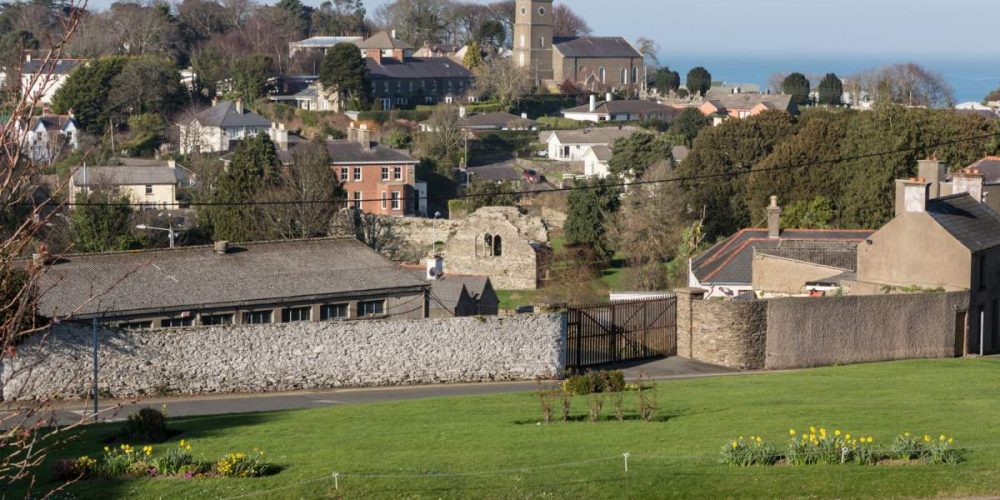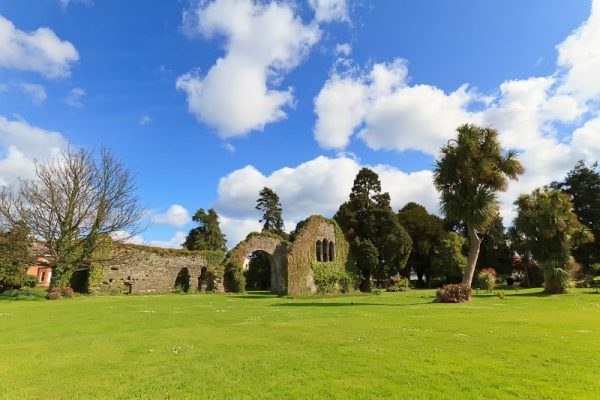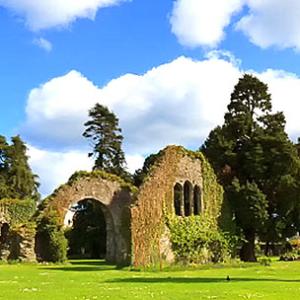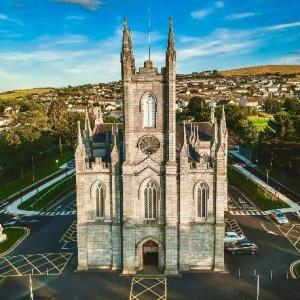
Wicklow is an old and historic parish tracing its origins right hack to the time of St. Patrick. The Celtic name of the district was Kilmantan, or the Church of Mantan, who was an attendant of St. Patrick.
The old church was situated in the cemetery on Church Hill but no remains of it now survive. During the Penal Days the Catholics of Wicklow worshipped in little chapels in Monkton Row and Melancholy Lane which were often raided and closed up. In 1641, the chapel in Melancholy Lane was raided by the notorious Charles Coote, its priest Fr. O’Byrne was murdered along with his Congregation.
 Archdeacon Andrew O’Toole Parish Priest (1788-99), built a permanent church in 1797, sited opposite the present church. It was one of the few churches in the country that escaped destruction during the 1798 rising of the following year. While awaiting possession from Lord Fitzwilliam of the present Parocial house Fr. O’Toole was residing at Cronroe, Ashford, returning there on the night of 23rd of August, 1799. he was set upon and strangled in the hollow of Tighe’s Avenue. Fr. Matthew Blake during the 1950′s re-constructed the old church to fulfil the roll of Parish Hall. Today it operates as a Youth Centre and is no longer in the ownership of the parish.
Archdeacon Andrew O’Toole Parish Priest (1788-99), built a permanent church in 1797, sited opposite the present church. It was one of the few churches in the country that escaped destruction during the 1798 rising of the following year. While awaiting possession from Lord Fitzwilliam of the present Parocial house Fr. O’Toole was residing at Cronroe, Ashford, returning there on the night of 23rd of August, 1799. he was set upon and strangled in the hollow of Tighe’s Avenue. Fr. Matthew Blake during the 1950′s re-constructed the old church to fulfil the roll of Parish Hall. Today it operates as a Youth Centre and is no longer in the ownership of the parish.
The Parish of Wicklow has at present an area of 6.300 acres and is comprised of more than 30 town lands. In 1846 Ashford and Glenealy became a new parish and V. Rev. T O’Carroll DD who had been a curate in Wicklow was appointed first Parish Priest of the Parish of Ashford.
The Abbey
 In the grounds of Wicklow’s Parochial House are the ruins of a Franciscan monastery known locally as ‘The Abbey’.
In the grounds of Wicklow’s Parochial House are the ruins of a Franciscan monastery known locally as ‘The Abbey’.
According to Archdall’s Monastico Hibemicum, the Abbey was founded in the reign of Henry III (1216-72). Petrie in his Antiquities of Ireland gives a slightly later date. The Abbey was confiscated in the reign of Edward VI (1537-52) when the Abbey grounds consisted of nine acres of arable ground and one acre of meadow. During this period the Abbey was used as an armoury and as a courthouse.
In 1615 Fr. Mooney, Provincial of the Franciscans in Louvain visited the Abbey and thus he describes it:-
“The venerable Church had been turned into a court house which was then filled by noisy and irreverent litigants. The cloister and other appurtenances were sadly dilapidated and falling into shapeless ruin. The chancel arch and its beautiful windows prove that it was a graceful structure, creditable to the piety of its founders, and the architectural science of those they employed to build it”.
In 1799 Archdeacon O’Toole, Parish Priest of Wicklow, leased the house on the Abbey grounds from Lord Fitzwilliam. At the beginning of the 19th century it was bought out by the then PP John Canon Meagher (1799-1811), who was followed by Michael Canon Maguire (1811-26).
In the years following the granting of Catholic Emancipation and the repeal of the penal laws in 1829 a new confidence appears to have been evident throughout the country in the number of new churches begun, despite the poor economic situation of the time.
History of the Parish Churches
There are two churches in the parish: St. Patrick’s Church in Wicklow Town and St. Joseph’s Church in Rathnew. Read about their history in the pages below:
The Future
Since the advent of the Second Vatican Council the church has repeatedly recommended the development of Pastoral Councils as a means of encouraging the shared responsibility of all the baptised in the life and mission of the church.
 Addressing a gathering of 100 bishops of Asia in New Delhi on 18th, November 1999 Pope John Paul II proposed that they foster greater involvement of the laity and consecrated men and women in pastoral planning and decision making through such participatory structures as Pastoral Councils and parish assemblies.
Addressing a gathering of 100 bishops of Asia in New Delhi on 18th, November 1999 Pope John Paul II proposed that they foster greater involvement of the laity and consecrated men and women in pastoral planning and decision making through such participatory structures as Pastoral Councils and parish assemblies.
In the autumn of 2004 Diarmuid Martin, Archbishop of Dublin authorised the establishment of Parish Pastoral Councils throughout the two hundred parishes of the Dublin Diocese. In the Spring of 2005 the process of selection of the members of the first Parish Pastoral Council for the Parish of Wicklow and Rathnew took place, and the new Council was presented to the congregation at Sunday Mass in the Autumn of the same year.
The development of our parish will inevitably continue, while our immediate focus turns to the urgent necessity for the provision of a new Parish Pastoral Centre for the Parish of Wicklow. My thanks and acknowledgments in the preparation of this document must go to scribes of previous histories of the Parish and the general district of Wicklow.
James L. Kavanagh, Chairman, Parish Pastoral Council
Spring 2007.

